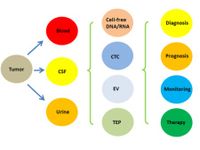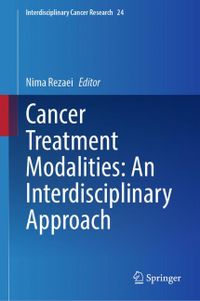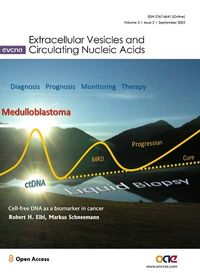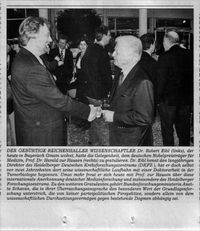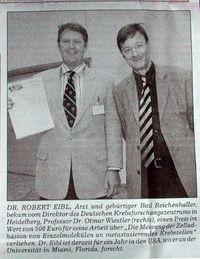Welcome
Heidelberg/Mannheim, Zürich (Switzerland), Karlsruhe, Stanford University (USA), München, Mainz, Miami (USA)
"My Bibliography" at National Library of Medicine, USA
Google scholar > 2000 citations
Nine AWARDS / recognitions ( within few months )
TOP1000 reviewers 2024
outstanding reviewer 2024
highly-cited paper
stipend (offered)
reviewer of the month
best paper of the year
two papers on cover
German Cancer Research Center (DKFZ)
Sigma Xi
Invited into Sigma Xi - Society
- with Albert Einstein and 230 Nobel Prize winners !
Sept. 2023, "Robert Eibl was duly elected a full member of Sigma Xi, The Scientific Research Honor Society in 2023. ...Over the course of the Society’s distinguished history, more than 200 members have won the Nobel Prize. ... Membership in Sigma Xi is by nomination only. ... Full membership is conferred upon those who have demonstrated noteworthy achievements in research. ..."
I warmly accepted the nomination early October to join the ranks of Sigma Xi Society, boasting a membership that includes over 230 Nobel Prize winners, e.g. luminaries like Albert Einstein, James Watson/Francis Crick, Arthur Kornberg, David Baltimore, Paul Berg, Stanley Cohen, Kary Mullis, Günter Blobel, John Goodenough, and Jennifer Doudna.
May, 2024: After request, I granted my state government to use one of my rare animal photographs
April, 2024: Abstract submitted for oral presentation at cancer/immunology conference
March 11, 2024: A reporter quoted my statement and referenced my review in her article (https://www.genomeweb.com/cancer/datar-cancer-genetics-aims-bring-circulating-glial-cell-assay-us-aid-brain-cancer-diagnosis )
Jan. 2024: recognized at Germany's largest research institution, the DKFZ (German Cancer Research Center): I had the opportunity to see my recent statement displayed on a poster in the lobby hall of the conference center as part of the DKFZ's 60-year celebration in 2024.The 2023 NOBEL PRIZE winner in medicine accepted my invitation to follow me. She believed in her life-time project, as well as I believe in my achievements.
Reached >150 peer-reviews in 30 journals, related to cancer research and, to a lesser extend, also nanotechnology and even COVID-19; incl. authors with billions (US$) of budget:
- Acta Neuropathologica - SPRINGER NATURE (personal lesson with Paul Kleihues long time ago, who repeatedly offered me a fast-track to full-professorship within 6 years)
- British Journal of Cancer - NATURE
- Cancer reports - WILEY
- Cancers
- Carcinogenesis - OXFORD UNIVERSITY PRESS
- Cells
- Exploration of Targeted Anti-tumor Therapy
- International Journal of Molecular Sciences
- Journal of Physiology and Biochemistry - SPRINGER NATURE
- Tumor Biology
- Vaccines
HOT paper !!! Highly cited
My recent paper "Liquid biopsy and primary brain tumors" got cited 62 times in about three years! (Source: Google Scholar, ResearchGate, Clarivate)
Continuing getting so many invitations to submit a manuscript for a journal or to contribute a book chapter, even for a book series claiming three Nobel winners as authors.
Peer-Reviewing similar topics, incl. COVID-19.
The University of Heidelberg quoted me:
March 2023
Talk at "Business English" course of the University of Heidelberg: my recent medulloblastoma paper
Stanford University workshop on Artificial Intelligence (AI) APP-building (30 participants, accepted for April)
Wonderful peer-reviewers - click here for full reports and replies
"the article is well written and informative and I enjoyed reading it. I would like to congratulate the authors for their time and effort to produce such a high quality result."
"outlined it in a clear and intuitive way"
2022
Cell-free DNA as a biomarker in cancer
Extracell Vesicles Circ Nucleic Acids 2022
2021
NEWS December 2025
- In preparation Original Article from Stanford University: CD44 / hyaluronate / immune cells / functional cell adhesion - finished/formatted, 1st draft sent out to co-authors (incl. Nobel equivalent winner)
- Submitted a Case Report (Dec. 20, 2025), restructured abstract as requested (Dec. 22)
- Published Review (online Dec. 19, 2025) - Circulating Tumor Cells in Glioblastoma. Cancers. 2026; 18(1):10
- CITED in Science Translational Medicine
November 2025
SUBMITTED Circulating Tumor Cells in Glioblastoma (Nov. 23, 2025)
- FINISHED major Case report on Nov. 30 (long version)
- "Writing in the Sciences" online-course (Stanford): 98%
September 2025
Selected TOP 1000 reviewers (MDPI)
August 2025
Chapter (Hardcopy / Book is about 262 EUR)
April 2025
Winning Cancers "Outstanding Reviewer Award"
March 2025
Award for a university - but I won't accept it
February 2025
Winning "Highly Cited Paper Award 2024"
November 2024
Awarded:
"Reviewer of the Month" - with interview
October 2024
Nobel Prize goes to two researchers on microRNA (not: mRNA !), to which I dedicated a paragraph or sub-chapter
in 9 of my last 10 publications since 2021 !
Surprising notification from ResearchGate,
- not any self-citation !
August 2024
My new book chapter
Springer Nature
Cover and Award:
"Best paper of the year!"
Cover page for my two papers:
Cell-free DNA as a biomarker in cancer Awarded best paper of the year!
Liquid biopsy for monitoring medulloblastoma
"Cover Picture: Liquid biopsy is emerging as a revolutionary new tool in cancer diagnostics and treatment monitoring. Like a mirror lake - reflecting the sun, sky and mountains - circulating tumor DNA (ctDNA) reflects typical features of medulloblastoma, the most common malignant brain tumor in children. The changes in biomarker level after treatment (surgery, radio- and chemotherapy) resemble the skyline of mountains and can be monitored by repeated analysis of blood or cerebrospinal fluid (CSF). Eibl and Schneemann originally developed brain tumor models, which finally allowed Eibl to confirm his medulloblastoma-like model by detecting the first p53 mutations in human medulloblastoma. 25 years later, such mutations were included as a critical part in the new World Health Organization (WHO) molecular classification of medulloblastoma, the current gold-standard in diagnostics. Here, Eibl and Schneemann summarize the recent developments and application of this knowledge in liquid biopsy and the challenges for improving the clinical management of patients with medulloblastoma."
OLYMPIC e-sports: CHESS 04/2023
I was invited and played among 2000 players worldwide, but reached "only" about the TOP25%:
"Thanks for playing in the Open Qualifier event in the first-ever Olympic Esports Series and for being part of our selection process for the Trials stage of the event."
This is one of hundreds of wild Bee orchids in a very small field I had discovered in the Palatinate (Germany) last year! So, I've photographed four Ophrys species this year (see also Gallery).
May 2023
Unique orchid hybrid (Ophrys insectifera x holoserica = natural extremely rare cross between fly and bumblebee orchid) in the Palatinate (Germany),
see Gallery for FOUR closely related species: bee orchid, bumblebee orchid (beautiful !!!), spider and the rarest fly orchid
ABOUT ME
Hi There,
I've dedicated my scientific education to cancer research as a biomedical scientist. At age of 21 years (long time ago) I started my thesis work in molecular cell biology at the Institute for Cell and Tumor Biology at the German Cancer Research Center (Deutsches Krebsforschungszentrum - DKFZ), which earned me a doctorate in "biologia cellularis molecularis" (Latin) from the Heidelberg University (perhaps unique for MDs in Germany). After finishing medical school in Heidelberg/Mannheim I started my first position at the University Hospital in Zürich, Switzerland - 25 years "young", where I contributed to long-lasting breakthroughs in cancer research and diagnosis, especially for brain tumors, which 25 years later led to the new gold standard of the classification of these tumors based on genetic analysis. Since then, I've conducted pioneering research at prestigious institutions like Stanford University, but giving back another stipend for Harvard University.
But my real scientific focus has been on investigating organ-specific cancer metastasis and delineating the potential steps involved in this process. I had the unique opportunity to compare it to lymphocyte trafficking during my time as a guest in the lab that later received the official Nobel equivalent for lymphocyte homing. My research on cell adhesion has elucidated a mechanism that can facilitate cancer cells' adherence to endothelial cells and rolling along blood vessels under shear. My work on organ-specific cancer metastasis at Stanford led me to innovate the use of atomic force microscopy (AFM) to measure adhesive events between mammalian cells under physiological conditions of pH and temperature, as well as at the single-molecule level on a living cell. I was the first to measure the pharmacological modulation of any adhesion molecule, such as an integrin, by any chemokine on any cell type at the single-molecule level. Despite my extensive research experience spanning institutions like the University Hospital of Zurich, Karlsruhe Institute of Technology, and the University of Miami, I've authored only a few but fundamental papers in peer-reviewed scientific journals and book series. However, I've recently taught myself to publish more, starting with the emerging field of Liquid Biopsy, which shares the fascinating aspects of circulating tumor cells with my research approach.
My main future challenge will be securing seed or venture capital for continuing my work with a start-up company. My goal is to bring my knowledge and pioneering concepts into research and applications.
Thank you for reading.
Nobel Prize celebration
Harald zur Hausen
Award
German Cancer Research Center (DKFZ Heidelberg)
Single-Molecule Studies of Integrins by AFM-Based Force Spectroscopy on Living Cells
My pioniering work on Atomic Force Microscopy (AFM):
A Nobel prize ?




